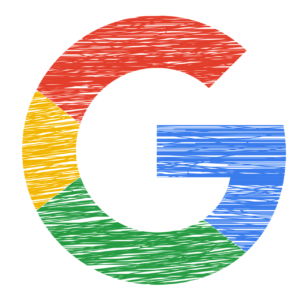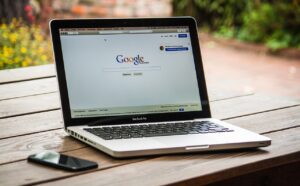Productivity Suites
What is a productivity suite, and what is their current role in education?
According to Forbes, an office (or productivity) suite is “… a set of productivity applications that typically include email, file sharing, document editing and collaborative tools.”
NYTimes.com explains the popularity of Google’s Productivity Suite by stating that “Today, more than half the nation’s primary-and secondary-school students… use Google education apps like Gmail and Docs”
In my own teaching experience, Google really took over in my school division around 2015. Instead of using large laptops to create presentations on Powerpoint and type essays on Word we began making the switch to Chromebooks, which were clearly a more affordable option. It also allowed us to move from 1 device per 2 students to a 1:1 device to student ratio.
Slowly, I started to see the benefits of moving to Google’s Productivity Suites:
- It was easy to move my Word Files and Powerpoints into Docs and Slides
- Students were able to collaborate on presentations and assignments without sharing a device
- Files were accessible from everywhere
- Students could share their working assignments with me for some additional support, instead of needing to bring a laptop up to me for assistance.
In 2017, a colleague introduced me to Google Classrooms, and it was an absolute game changer for me as an educator. It was a way to organize assignments, grades, due dates, everything in one place. I wasn’t chasing down papers or keeping constant checklists, because everything could be submitted and tallied on the Google Classroom. In my mind, this opened up my time to focus more on the content I was teaching instead of organizing and collecting everything.

Might as well be a photo of my desk before Productivity Suites – Photo by OpenClipart-Vectors on Pixabay
That being said, this was a time when I was teaching in a community school, where many of our students did not have access to technology at home. The way we worked with this was by giving students the option to print out any unfinished work at school, and take it home to complete by hand. I needed to remember to focus on the quality of their work and not just the outward appearance.
There is the issue of copy and pasting from the internet and claiming it as one’s own work, but I truly don’t believe this is a new thing. When we were strictly using textbooks, students always copied word-for-word from the textbook. I even remember my sixth grade teacher, Mrs. Friesen, explaining to my class back in 2002 that we needed to explain answers in our own words, and try to make connections to our own lives/previous learning to show that we truly understand something.
If anything, it is easier for me to check if students have been copy-pasting from websites. All I need to do is copy a snippet into Google and it will likely locate the source of the plagiarized information for me.
Access to Productivity Suites and online tools means that we need to look at how we are teaching and WHY we are teaching it. What base knowledge should students have, and where should we teach them how to help themselves? How can they locate trustworthy websites and sources when you can pretty much search up any answer that you want to find online? How can they give authors credit where credit is due?
Now, to something that I had truly never considered before last week’s presentation…
What is Google getting from this? According to Google Workspace for Education itself, School Divisions are indeed paying for it’s services. The Classroom Help page also states that:
Classroom doesn’t use your content for advertising
There are no ads in Google Workspace for Education Core Services, and core service data is not used for advertising purposes. Also, if ads are shown in Additional Services and you’re using your Google Workspace for Education account in K-12 (primary and secondary school), we don’t show you personalized ads, which means we don’t use information from your account or past activity to target ads. However, we may show ads based on general factors like your search query, the time of day, or the content of a page you’re reading.
However, because I have the ability to search for whatever answers I truly want to find, I can also find an article from The Verge that says “Google uses student data from Chromebooks and Google Workplace for Education ‘for its own purposes,’ which isn’t allowed under European privacy law.” The article further goes on to stay that Denmark may be phasing out Chromebooks due to this.
I don’t know what to believe or who to believe… what I want to know is what information would be collected and how is it used? I’m going to ask our Supervisor of Learning and Technology to see what I can learn from them.
UPDATE! I received a response from my School Division:
“Thanks for checking in!
Our division uses the free version of Google Education.The timing of your question is impeccable as we are currently working on an information package for parents that will provide more information on the use of third party web-based applications, of which Google is one.We hope to have this ready to go shortly after the February break. I will share it with you once it is ready to go.”



Great Post Jenni! I also had not given as much thought into what Google was gaining with it’s G Suite of Educational tools until last week. I guess maybe I’m a bit to trusting of the software and hoping data collected would only be used for good. Feel like I could go down a rabbit hole reading into it further and further. Look forward to reading future posts.
Hi, Jenni!
I was the same way before doing my research for the presentation. There are so many good things that come from productivity suites. Even to this day my students get a little upset with me that I have shifted away from Google Classroom and just use EDSBY (just a matter of me wanting to keep everything in one place). Many of my students have been using classroom for the majority of their middle-years education and in high school. With it being launched in 2014, it is all my grade 9s (born 2009) seem to know! It may not necessarily be a bad thing, because of how awesome the suite is, but yes there are all these things that go on behind the scenes that kind of happen in the shadows. The big issue with it, and you highlight it perfectly, is there is so much unknown. There is the promise that they don’t do anything with our information, but there doesn’t seem to be any proof of it and there are so many conflicting messages from other resources. I would be very interested to here what your Supervisor of Learning and Technology says!
Greg